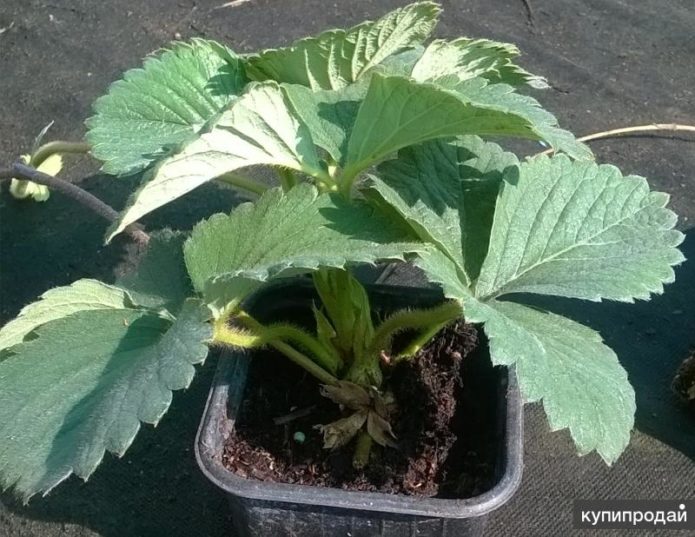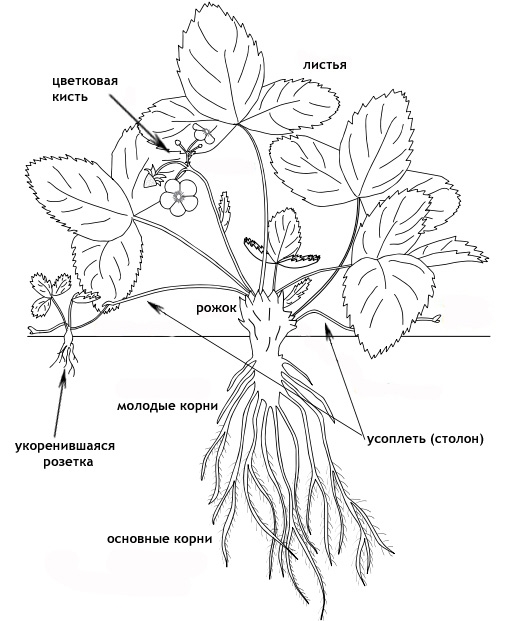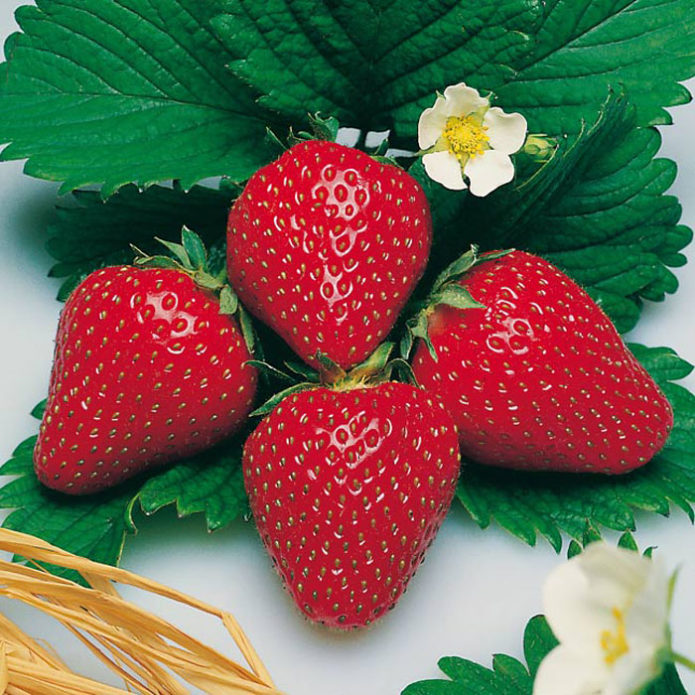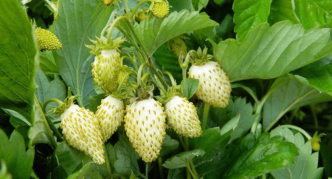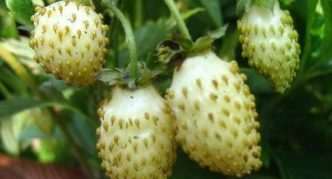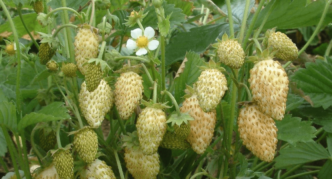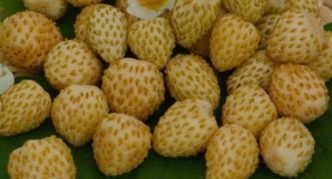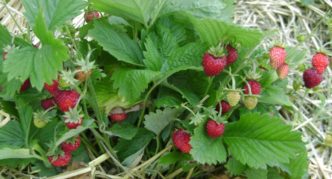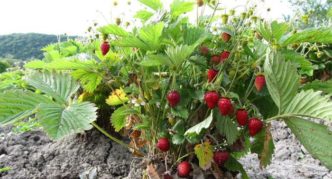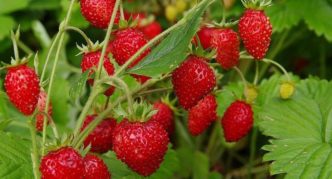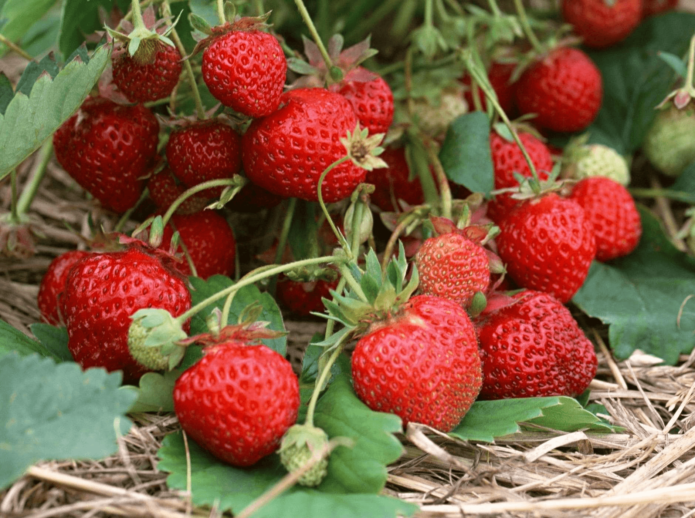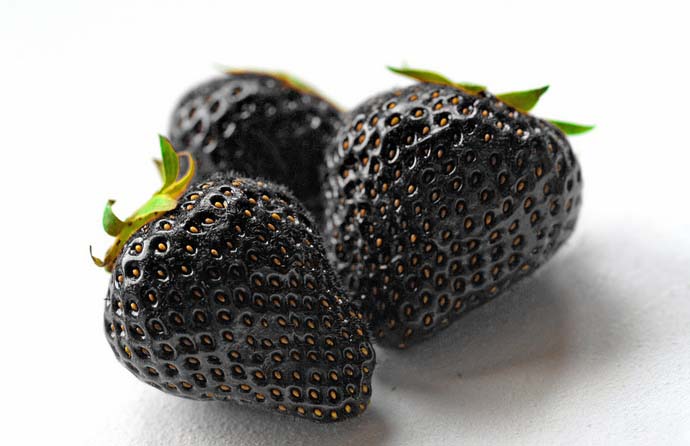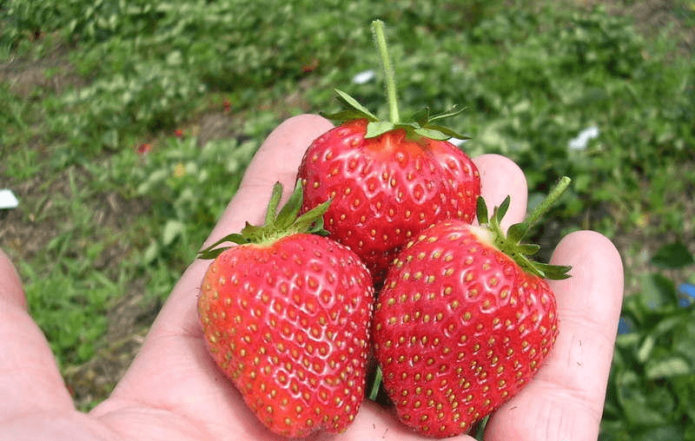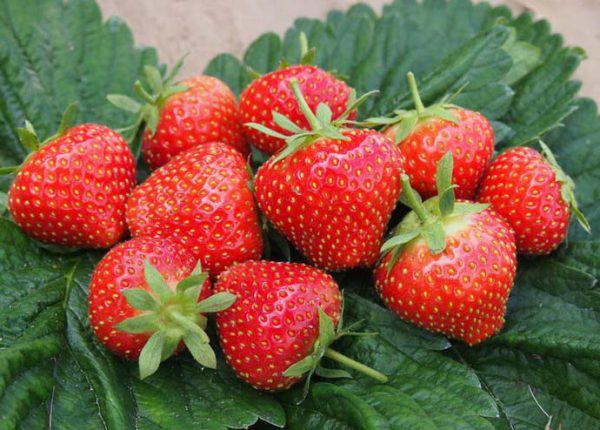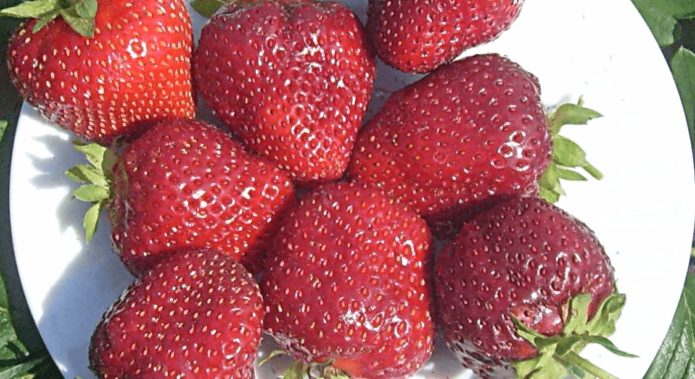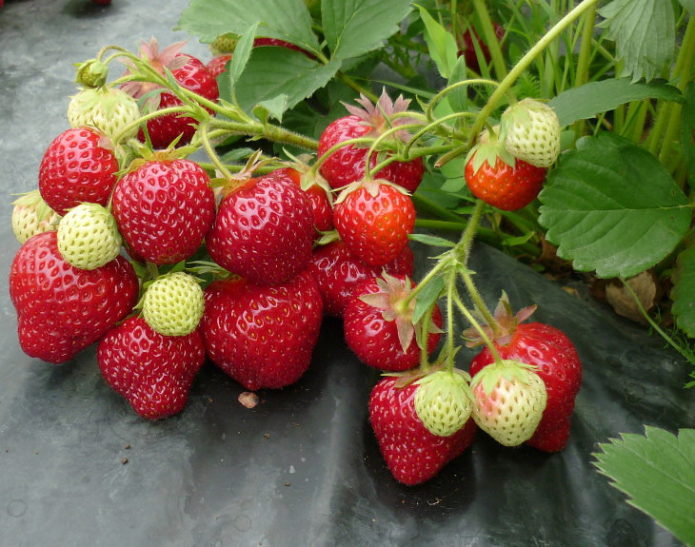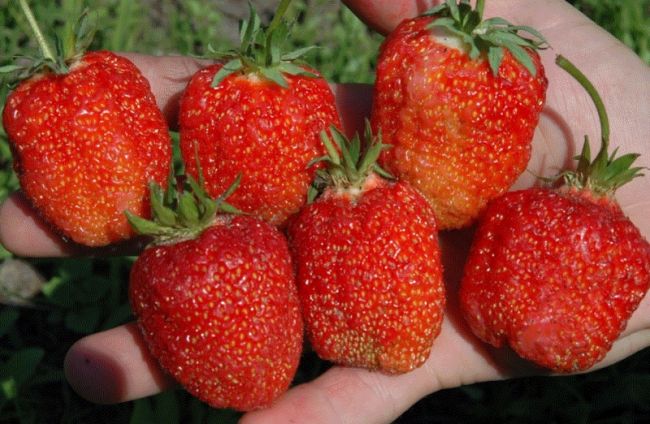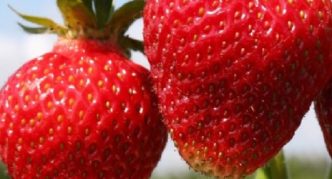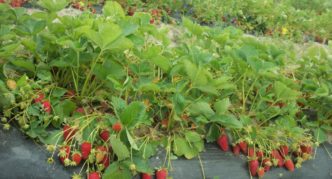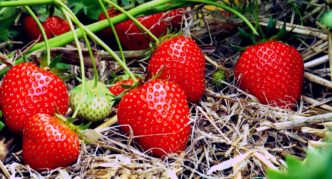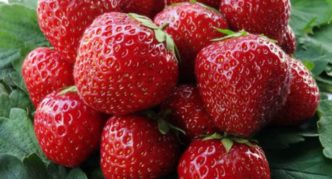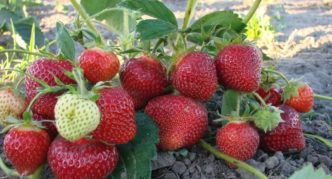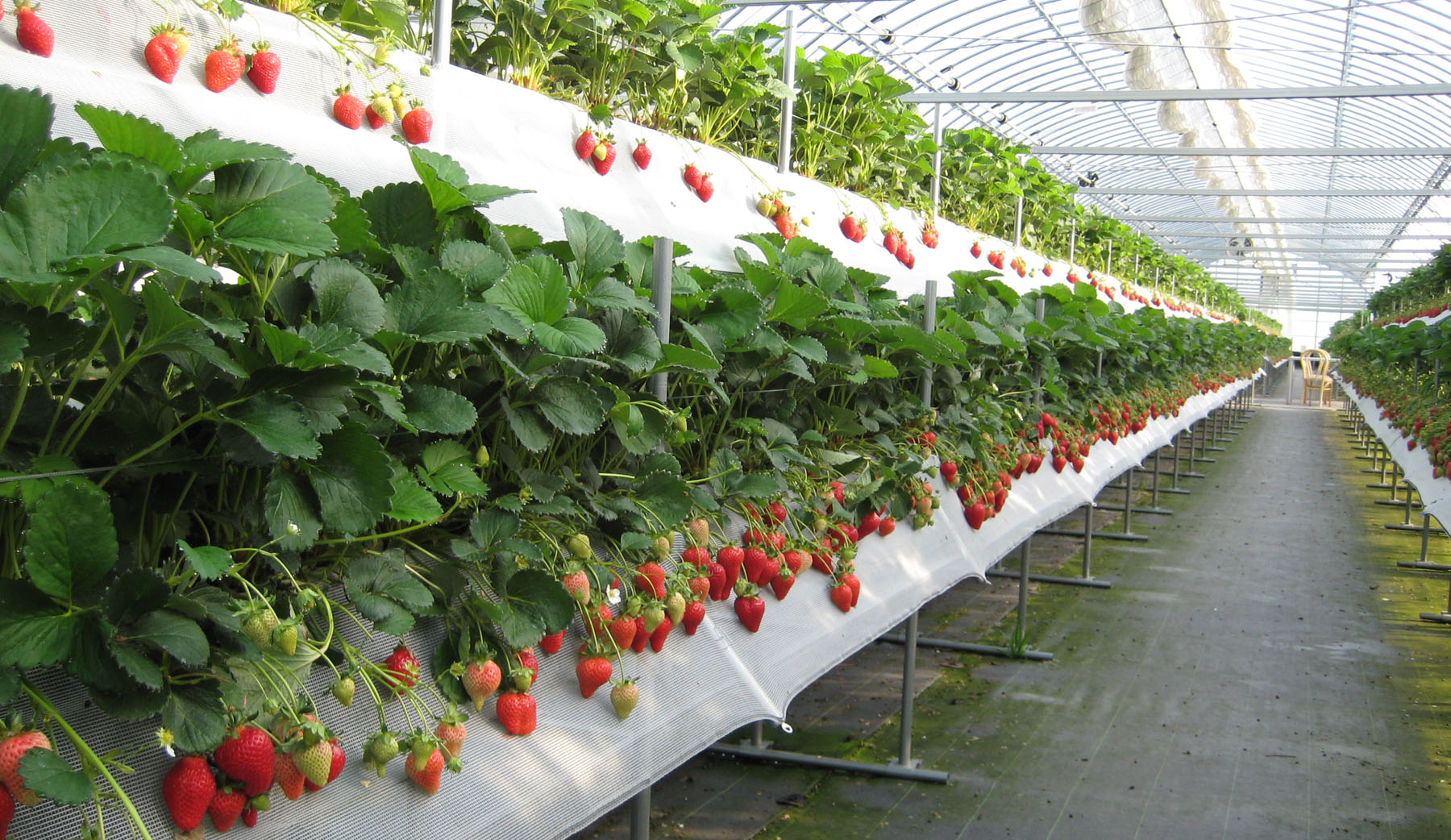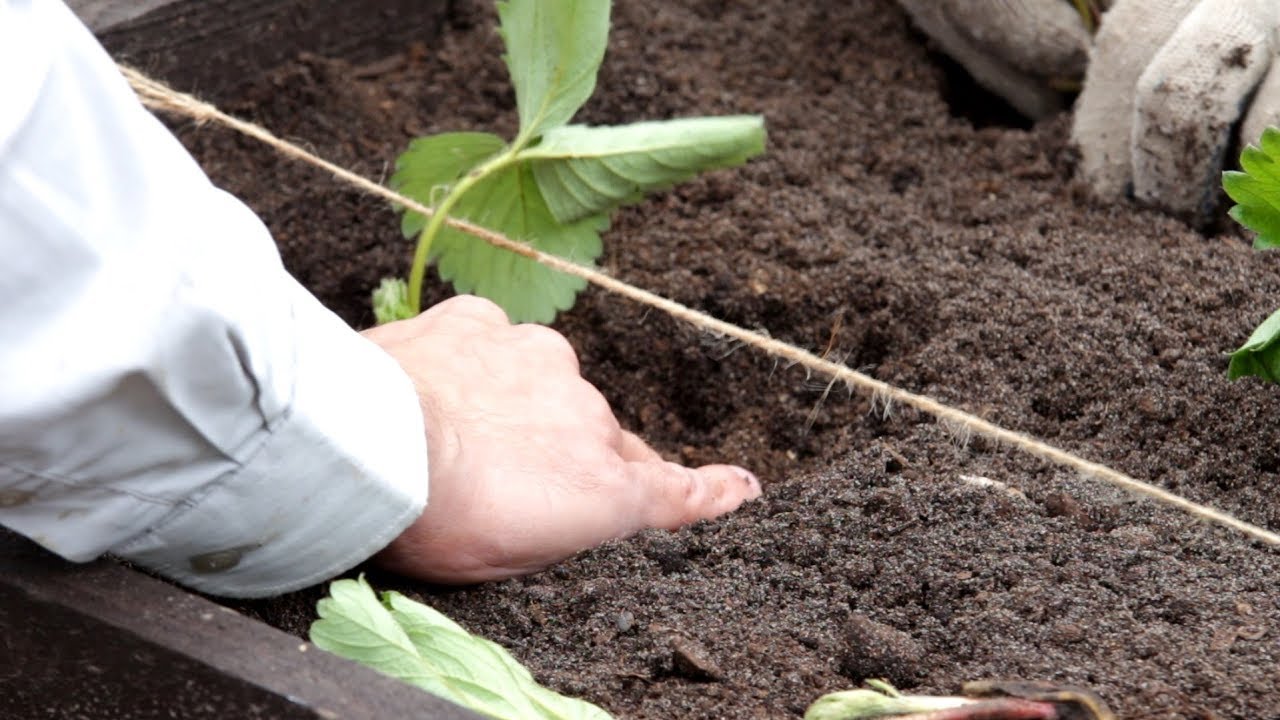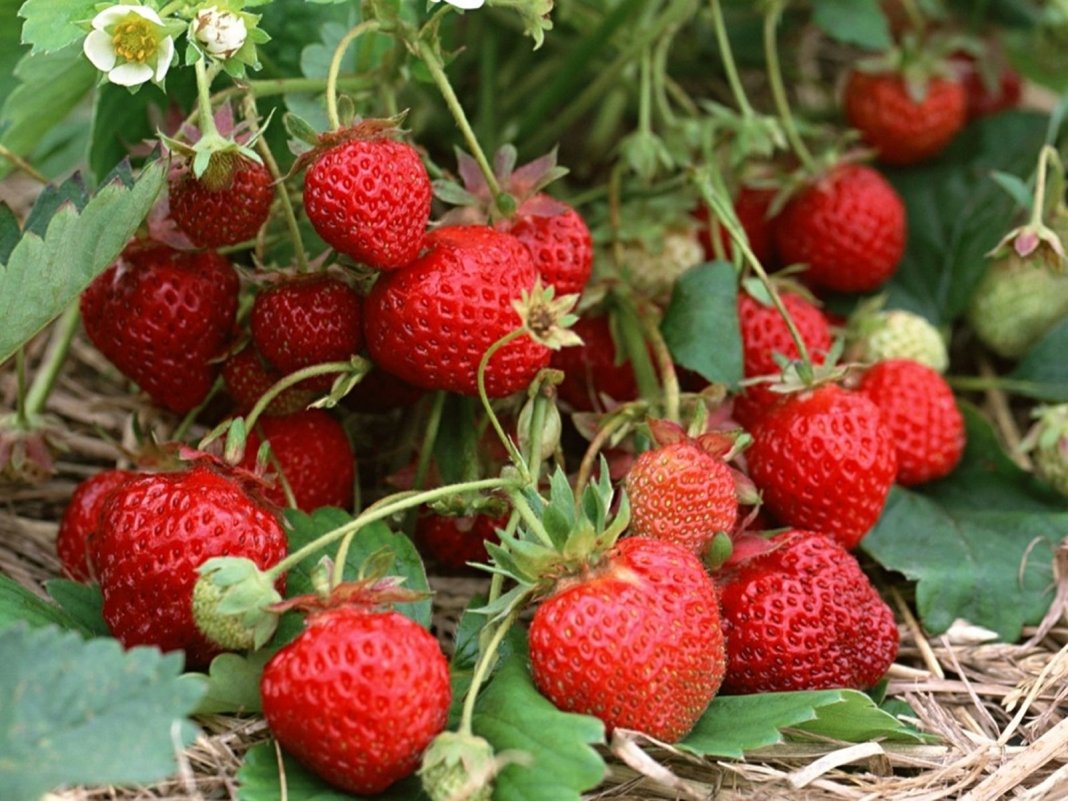Everyone wants to have a large, sweet berry at the dacha so that it ripens continuously from May to early October. Such varieties and hybrids exist.
Content
Which is better: variety or hybrid
When choosing seedlings or strawberry seeds, it is important to guess with the variety. You shouldn't give up on hybrids either.
If you do not go into the specifics of biology, but only compare varieties and hybrids according to criteria important for the summer resident, then the picture is as follows:
- Taste. Both varieties and hybrids have both excellent taste and are suitable only for jam.
- The size. In varieties, either the berries are not too large, up to 30 g, or the first 2-3 berries per bush are large, and the rest are small, 10-15 g. In hybrids from the beginning to the end of the fruiting season, the berries are uniform in size.
- Productivity. In hybrids both from a bush and from a meter of planting area, the yield is much higher.
- Keeping quality. Both hybrids and varieties are suitable for storage and long-distance transportation.
- Resistant to weather surprises. In varieties, it is much higher than in hybrids.
- Susceptibility to disease. There are no varieties or hybrids that are resistant to all diseases. Strawberry mite resistance is common in many varieties with small berries.
- Durability. Hybrids of the latest generations bear fruit for 1–2 seasons, after which the bushes are dug up and young are planted in their place. However, for 2 years, the collection from hybrids is about the same as from varietals for 4 seasons.
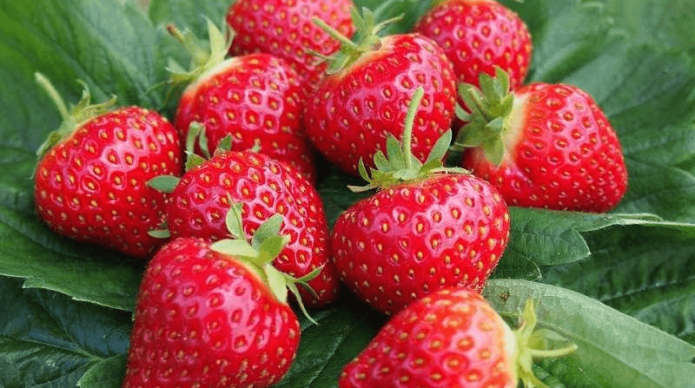
Among the varieties and hybrids of strawberries, you can choose the best option, based on your own preferences and taking into account the local climate
Seeds of hybrids are not cheap, the price of 5–10 seeds is from 45 to 180 rubles. Seedlings may appear in a month.
Rarely, but misgrading happens, some of the seedlings may not correspond to the declared.
When buying seedlings in cups, it is worth looking at both varieties and hybrids. If these are not seedlings with flowers, but rooted whisker rosettes, hybrid plants are available for the price.
Young plants grown from hybrid seeds and sold with flowers are very convenient if the volume of the pot is not less than a liter. They are expensive, but they begin to bear fruit almost immediately after purchase.
Repair strawberry
All varieties and hybrids of cultivated strawberries are divided into groups according to maturity. In addition to early, middle and late ones, there are those that give two harvests per season, and even bear fruit continuously. Repaired varieties grow in many, but not everyone understands the meaning of the name itself. Repairability is the property of plants to tie fruits on the shoots of the current year.
The strawberry bush forms three types of shoots:
- The first is the stem, the horn.It grows upward and branches out annually at the end. Annual growths are the same shoots of the current year on which flower stalks appear in remontant varieties.
- The peduncles themselves are also shoots.
- The third type is a mustache.
In varieties with a single fruiting in the summer, a new horn grows, on which the rudiments of fruit buds are laid in September. In remontant plants, flower buds are set during the growth of shoots.
Repaired varieties and hybrids are conventionally divided into laying flower buds with long daylight hours, that is, in summer, and forming them regardless of the duration of illumination. The first ones bear fruit twice, in early summer and autumn. Strawberry plants with neutral daylight hours lay flower stalks during the entire vegetative period, therefore they bloom continuously from spring to autumn, or have several waves of flowering and ovary formation.
Ampel strawberry
Among the remontants there are those who have a peduncle on the mustache after the formation of several leaves. Such varieties are sometimes called curly, which is not entirely accurate. It is more correct to attribute them to ampelous forms. Such whiskers are essentially peduncles, but if the flower arrow is removed, the shoot will give roots on wet, loose soil.
The word "ampel" means a lamp, a chandelier.
The berries on a young mustache are tied small. The best ampelous selection masterpieces are the Cardinal variety and the Garland F1 hybrid.
Cardinal
The variety was bred in the USA. The bushes are large, with dark green shiny leaves. Berries up to 80 g in weight, cherry color, fusiform. Not everyone likes the taste - it is very dense, almost hard. But in terms of the ratio of sugar and acid, it is an excellent mark (4.8 points out of 5). Fully ripe berries do not crumple. The cardinal bears fruit three times per season: the second crop gives on young mustaches, the third on new flower stalks of the bush. There are few mustaches, no more than 10 on three-year-old bushes, even less on young ones. They take root with difficulty, and those mustaches that have already faded will not give roots. The variety is resistant to diseases of strawberries, but does not tolerate thickening.
Garland F1 - the achievement of Russian breeders
The bush has a decorative appearance from the moment of regrowth of young leaves - bright, rich emerald green color. Before the appearance of the mustache, compact, almost spherical in shape. The whiskers are light, with pinkish blurred spots. The berries are not very large, from 25 to 32 g, but uniform in size and regular shape. The taste is good, almost independent of the weather.
Fruiting continuously from June until frost. The variety is grown either in high beds, or in boxes or pots, since the hybrid does not tolerate waterlogging. Responsive to feeding. The yield from one plant is up to 1 kg per season. Winter hardiness and heat resistance at an average level.
Alpine strawberry varieties
If seeds are purchased, then it is better for novice gardeners to stop at varieties of small-fruited beardless strawberries, belonging to the species "Alpine strawberries". Seeds in a bag from 50 pieces, more often - 0.04 g, this is about 120 seeds. Germination rate is about 80%, the price is from 15 to 35 rubles. The main plus is high winter hardiness, no need to cover. Suitable for open ground throughout Russia, Ukraine, Belarus.
The berries of alpine strawberries are red, white, light yellow (depending on the variety) This variety is similar to wild strawberries - the size of the leaves, the appearance of the bush and fruits, and some of the red-fruited varieties also have a typical forest berry aroma.
The compactness of plants and the possibility of compact planting is another advantage of varieties with small berries. Solid rugs with a width of about 60 cm leave no chance for weeds. All work is reduced to feeding and picking berries.Fruits can be harvested all summer, in the south until mid-October.
An important advantage is that the bushes do not get sick. Winter hardiness and resistance to drought and heat are typical for all varieties of alpine strawberries. There is a possibility - watered, fed. But even with one top dressing per season, the plants will bear fruit continuously from spring to late autumn. On loose, fertile soil with a slightly acidic reaction and mulching the surface of the beds in early spring and autumn with straw, the yield of the bush reaches 600 g.
Alpine strawberries are grown by sowing seeds for seedlings in spring, and after a year the bushes bloom. Plants give a full harvest for 3 years, then they age, the leaves become smaller. Attempts to divide three-year-old bushes into separate horns and plant them, as is done with large-fruited strawberries, are useless. To renew plantings, seeds are taken from berries ripened on the bushes. Fresh seeds can be sown before winter in a greenhouse, superficially, but covered with non-woven material until germination in May.
Alpine varieties, in comparison with large-fruited remontant ones, are less demanding in care, and the yield from 1 square meter (due to a denser planting) is often higher than that of strawberries.
White strawberry
Light varieties (white and light yellow) are more resistant to frost than red ones, do not require shelter, of course, with the obligatory mulching of the soil with straw. The taste is honey-sweet, the aroma is weak.
Popular varieties:
- Yellow miracle. The largest variety. With good care, the berry weighs 6–7 g.
- Pineapple has a small bush size and bright aroma. The berries are small, 3-4 g, but the yield is up to 600 g per plant.
- White Lotus. Bred in Japan. Delightful, melting taste. The bush transferred to the room from the garden in the fall bears fruit until mid-January! Productivity is modest, 250-300 g per bush.
- Other mustacheless varieties with a similar color of berries from this group:
- Zolotinka,
- Weiss Solemacher,
- White soul
- Snow White,
- White Swan.
The diameter of the bush is 20 cm. Suitable for dense planting, in the shade they bear little fruit. The taste is honey.
White and yellow varieties do not cause allergies, birds are not interested in light berries.
Photo gallery: varieties of light strawberries
- Strawberry Weiss Solemacher has conical fruits, medium density, cream color
- Strawberry White Soul grows well in any conditions, prefers light partial shade
- Strawberries Yellow miracle - the largest-fruited variety of white strawberries
- Strawberry Zolotinka does not form a mustache at all
- Strawberry White Lotus has a delicious taste
Alpine red strawberries
Red alpine strawberry varieties:
- Dream is the earliest of the Alpine varieties. Small berries ripen in unison and continuously until September.
- The September miracle is the largest of the red varieties, berries are 6–7 g each, do not shrink, do not lose their taste on rainy September days.
- Renaissance. The bushes are huge, 40 cm in diameter and 30 cm in height, so the berries are collected in a well-lit place in baskets. Dessert taste. Fruits up to 5 g.
- Ali Baba. Small, 3–3.5 g berries, located above the leaves. One of the few varieties that bears fruit well in the shade and in the sun. Bright aroma of wild berries. They differ from the Ali Baba variety only in the shades of the leaves and the shape of the fruits of the variety:
- The scent of summer
- Forest tale
- Seasons.
Photo gallery: varieties of red small-fruited strawberries
- Renaissance strawberries have very large bushes
- Ali Baba's strawberries bear fruit well in the shade and in the sun
- Strawberry taste Lesnaya Skazka is sweet and sour, with a characteristic forest aroma
- Dream strawberry - the earliest of the Alpine varieties
Large strawberry (strawberry)
All varieties and hybrids with a berry mass of 16 g or more are considered large, even if there are 2-3 large berries on the peduncle, and the rest are trifles. From the point of view of biology, large-fruited strawberries, or Victoria, which are usually called garden strawberries, are a kind of "pineapple strawberries". And strawberries are a different plant.
Early maturing varieties and hybrids
Russian summer residents should pay attention to early varieties of domestic selection. After all, they were bred specifically for our difficult weather conditions. Early varieties are especially vulnerable to spring frosts, which often occur while the plants are growing and sometimes have already released flower stalks.
For the middle lane and the Moscow region, varieties bred by breeders of Bryansk, for example, Kokinskaya Zarya, are suitable. It is characterized by resistance to strawberry mites, leaf diseases, snowless winters, spring frosts. Berries in Bryansk ripen in early June, to the south - from mid-May, depending on the weather. First fruits - 30 g. Dessert taste.
Black chokeberry
The berries, of course, are not black, but dark cherry with a purple hue. So if you come across a seedling "black", it is worth the risk. Moreover, the varieties and hybrids with dark-colored berries are tasty and lying, they winter well in central Russia. The berries of the Italian variety Black Prince weighing 40-50 g. The Dutch Black Swan has smaller fruits, 30-40 g. A characteristic feature of the variety is the bluish tint of flowers.
Like any strawberry, black-fruited varieties do not tolerate either excess or lack of moisture, in agricultural technology they are no different from red varieties.
Dutch varieties and hybrids
Breeders in the Netherlands develop varieties with high yields, long-term fruiting, good taste.
But there is no opportunity to test their new products in the open field in Holland. Therefore, the weather surprises typical of the Russian climate are not for Dutch sissies. Even if the variety or hybrid is intended for open ground, it is rash to plant the entire garden bed with foreign novelties. It's another matter if you need a variety for a greenhouse - here the choice is clearly in favor of the Dutch. But in the garden they will have to be covered for the winter.
Mainly remontant varieties are popular in Russia. Therefore, damage to the first buds by frost is not critical; after removing these peduncles, the bush will release new ones. Experienced gardeners always remove the first peduncles immediately after their appearance - so that the strawberries gain strength after the cold weather. Of course, in those bushes that are classified as neutral day hybrids. Varieties and hybrids with one or two harvests per year will take a long time to discard new flower stalks.
There is no need to be afraid of genetically modified plants. In Holland, as in Russia, GMOs are prohibited by law, which means that large manufacturers will not do this.
Known non-remontant varieties:
- Vima Ksima. The variety is late ripening. The bush is powerful, spreading. Berries of dessert taste, round, dark red. Weight 20-30 g. Damage by diseases and pests at an average level. Good winter hardiness. Resistant to heat. Drought does not tolerate well. The advantages of the variety are unsurpassed taste and bright aroma, the berries are uniform in size, the yield is very high, up to 150 c / ha. The disadvantage is a very large number of mustaches.
- Wima Kimberly. The leaves are light, dull. The berries are light. The mustache is red and few. The variety is drought tolerant. Otherwise, everything is the same as that of the Vima Xima variety - the taste, the shape of the berries, and the yield.
- Elvira. Medium sized bush. Fruits are red, glossy, with strawberry aroma, firm pulp, sweet. The average weight is 40–60 g. Up to 0.5 kg of berries are harvested from one plant, and with good care this figure increases. The variety is resistant to root rot and fungal diseases, can tolerate cold up to -22aboutFROM.
Repaired varieties:
- Vima Rina. The berries are large (up to 45 g), dense, conical, have a good taste. The fruits are transported without loss.The variety is resistant to common diseases and pests of strawberries.
- Florina (Florin). A variety that adapts well to outdoor conditions, but is also grown in greenhouses and even apartments. The bushes are compact, the flower stalks are powerful. Fruits are conical, bright scarlet, with a glossy sheen. Forms a little mustache.
Zemklunika
Zemklunica is a hybrid obtained by crossing European strawberries and large-fruited garden strawberries. In the State Register of Breeding Achievements of Russia, so far there is only one variety of Zemluniki - Kupchikha. The bush is small, the peduncles are located at the same level with the leaves. The berries are cylindrical, dark red in color. Fruit weight varies from 3 to 17 g. The pulp is juicy, dense. Merchant's wife is a non-repaired medium-ripening variety. It is weakly affected by diseases and pests.
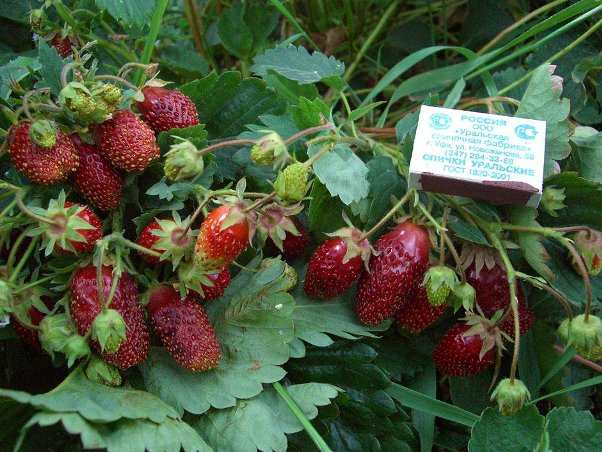
Zemklunica is a hybrid obtained by crossing European strawberries and large-fruited garden strawberries
Choosing a variety according to the region
Each region has its own climatic characteristics - winters with little snow or 40-degree frosts; damp, short summers or hot and sunny.
If a variety is zoned for a certain region, this means that many years of testing in the conditions of the regions included in it have been successful.
In addition, in the State Register of Breeding Achievements, some varieties are recommended for all regions of Russia. Here they are:
- Vima Rina,
- Garland,
- Yoke,
- Elizabeth 2,
- Crimean remontant,
- Lyubava,
- Lyubasha,
- Moscow delicacy,
- all varieties of small-fruited alpine strawberries.
It is clear that after the breeding of a new variety and obtaining a patent for it, several years will pass before it is included in the list of recommended varieties. Therefore, many nurseries try new products themselves. Of course, these experiments are not officially valid. But if the nursery successfully breeds and sells this variety or hybrid, you can safely take it.
Buying novelties of foreign breeding that have not yet been tested for a lot of money is already a risk. But the buyer only risks money, because strawberries take up little space, and the result will be visible in 2 years.
Strawberries for the Leningrad Region
The State Register for the North-West region of Russia recommends:
- early varieties:
- Zarya,
- Kokinskaya early,
- Ruslan;
- from the mid-early:
- Kalinka,
- Beauty of Zagorya;
- mid-season:
- Hope,
- Orlets,
- Sudarushka,
- Knight,
- Marvelous,
- Festivalnaya;
- late and mid-late varieties:
- Anastasia,
- Zenga Zengana,
- Cinderella,
- Red Gauntlet,
- Troitskaya,
- Generous.
In addition to them, there are remontant varieties that are recommended for cultivation in all regions of Russia.
The sweetest of the varieties capable of producing crops in cold and rainy summers, which is not uncommon for this region, will be:
- Kokinskaya early,
- Moscow delicacy,
- Alexandria,
- Yellow miracle.
The variety of the Latvian selection of Junia Smides will also be a good choice. The berries, bright red with shine, taste good, the flesh is tender, juicy, sweet and sour. The bush is powerful, spreading. The number of whiskers is average. Junia Smides is disease resistant. The yield is high, up to 140 kg / ha.
Varieties for growing in Ukraine
The main problem in the southern regions of the country is the baking of berries in the sun. Therefore, varieties are preferred in which the berries are hidden under the leaves, and not carried out on long peduncles outside the bush. In the State register of plant varieties suitable for distribution in Ukraine, you can find more than 20 varieties of strawberries. Among them:
- Crimson,
- Bereginya,
- A source,
- Lviv early,
- Rusanovka,
- Torch,
- Festival chamomile,
- Elsanta,
- Elvira,
- Crown.
Photo gallery: varieties of strawberries for growing in Ukraine
- Strawberry Festival chamomile is winter-hardy, resistant to fungal diseases
- Strawberry Torch is winter and drought resistant
- Strawberry Bereginya gives high yields
- Polish strawberry variety Korona is doing well in Ukraine
- Elsanta strawberries have tall, powerful bushes
The main rules for successful strawberry cultivation
Features of growing strawberries:
- Regardless of the variety, you need to choose a suitable place - without stagnant melt water in the spring. The soil needs fertile, slightly acidic. It is easy to acidify the ground by introducing manure humus, fertilizing with fermented herbal infusion, mulching with semi-ripe coniferous sawdust.
Fresh sawdust cannot be taken, they absorb nitrogen from the soil and, moreover, are compressed during irrigation and rain, forming a crust.
- Strawberry bushes should be well ventilated. It is better to plant in a garden in 2 rows, and only for alpine varieties a three-line planting is permissible.
- The soil under the bushes should be mulched. Do not take dry or fresh grass as mulch. Straw, small pine shavings, fallen dry leaves, and a non-woven covering material will do.
- Agrofibre can be taken in both white and black colors. It is important to make the holes correctly. Most often, it is recommended to make a cross cuts for planting, but it is better to cut out circles with a diameter of 8-10 cm.
- You need to feed the sweet berry at least three times per season. Early in spring - with mineral complex fertilizer with microelements, before flowering - with organic infusions - fermented mullein or green fertilizer.
You cannot take bird droppings for strawberries - there are too many weed seeds in it.
- The most important thing is the right shelter for the winter. Although slightly frozen plants bear fruit worse, they do not die. The film is not suitable for sheltering strawberries - if you cover the bed with a film even before the onset of frost, the core of the bushes will rot during the winter.
- In autumn, the space between the bushes is covered with straw or dry leaves of birch, linden. Until the day the air temperature is above -6aboutC, you don't need to cover with anything on top. Even freezing rain is not terrible. But to prepare pieces of agrofibre already cut to the size of the beds and to think over how and how to fix the edges, it is necessary in advance. Material thickness - 25-30 g / m2, no more. The film is generally not suitable for sheltering strawberries.
- The best cover for the aboveground part of the bush is snow. If he has already covered the strawberry bushes, it is not necessary to additionally insulate (except for heat-loving varieties of southern selection).
The most productive strawberry varieties for planting in the garden are Dutch. The most cold-resistant are the achievements of Russian breeders. And everyone can choose a variety to their taste and color.
